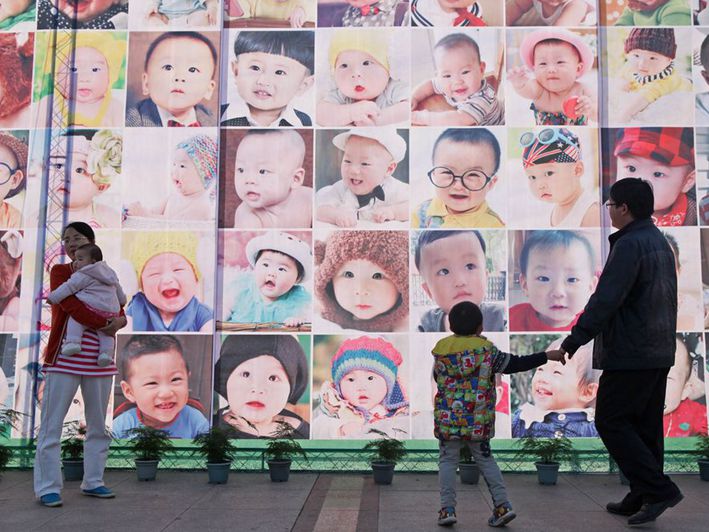
People pass a poster printed with faces of babies in Taizhou, Zhejiang Province of China. Photo: Getty Images
China’s population is expected to peak at about 1.45 billion by 2030, according to the national population development plan for 2016-2030 released by the State Council yesterday.
The country will enter a key transitional period between 2021 and 2030 in its population development as it will witness a decrease in the number of people at working age, according to the plan, which was signed and approved by Premier Li Keqiang.
As “China’s basic national condition of a large population” and “population pressure on economic and social development will not fundamentally change,” China will adhere to the family planning policy as a basic state policy, and fully implement the two-child policy to balance the population, according to the plan.
China’s population was 1.375 billion as of 2015, and it allowed all married couples to have two children from 2016 in an attempt to avert demographic disaster and save its working population from the increasing burden of supporting the country's growing proportion of retirees.
Last year, Zheng Zhenzhen, member of the Chinese Academy of Social Sciences, ignited a heated discussion after saying that China’s population would fall below one billion by 2100 at the World Economic Forum. Zheng also said that the population would fall back to levels not seen since 1980.
China’s new two-child policy also followed an earlier easing of the one-child policy in 2013 that allowed couples to have a second child if either parent was an only child.
Although Chinese parents have expressed their reluctance at having a second child, the new two-child policy has resulted in the highest birth rate in the country since 2000, according to China's National Health and Family Planning Commission (NHFPC).
NHFPC said on January 22 that there were 17.86 million babies born in the country in 2016, a 7.9% increase from the previous year, and a number that's also greater than the population of the Netherlands.
Experts say the new second-child policy will have “long-term effect” and is “very helpful” to China’s “sustainable development”.
By 2050, the policy is expected to bring about an extra 30 million working-age people and reduce the nation's aging rate by 2 percent, according to NHFPC.
| Touched | Sympathetic | Bored | Angry | Amused | Sad | Happy | No comment |